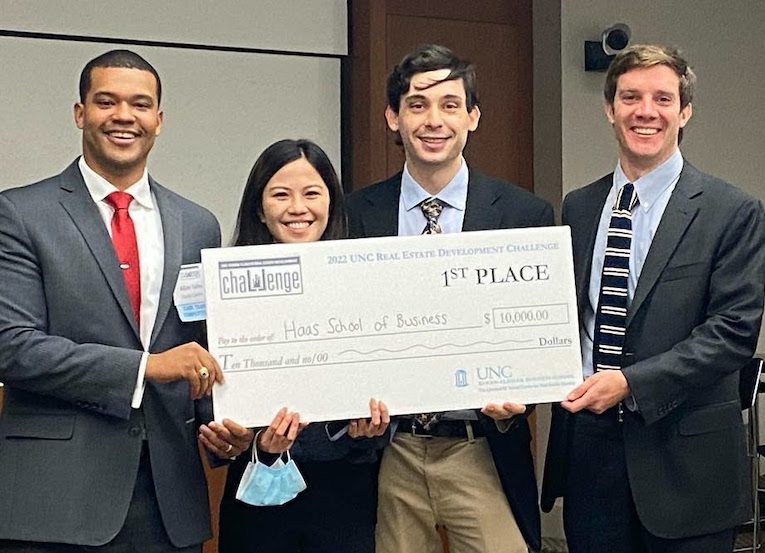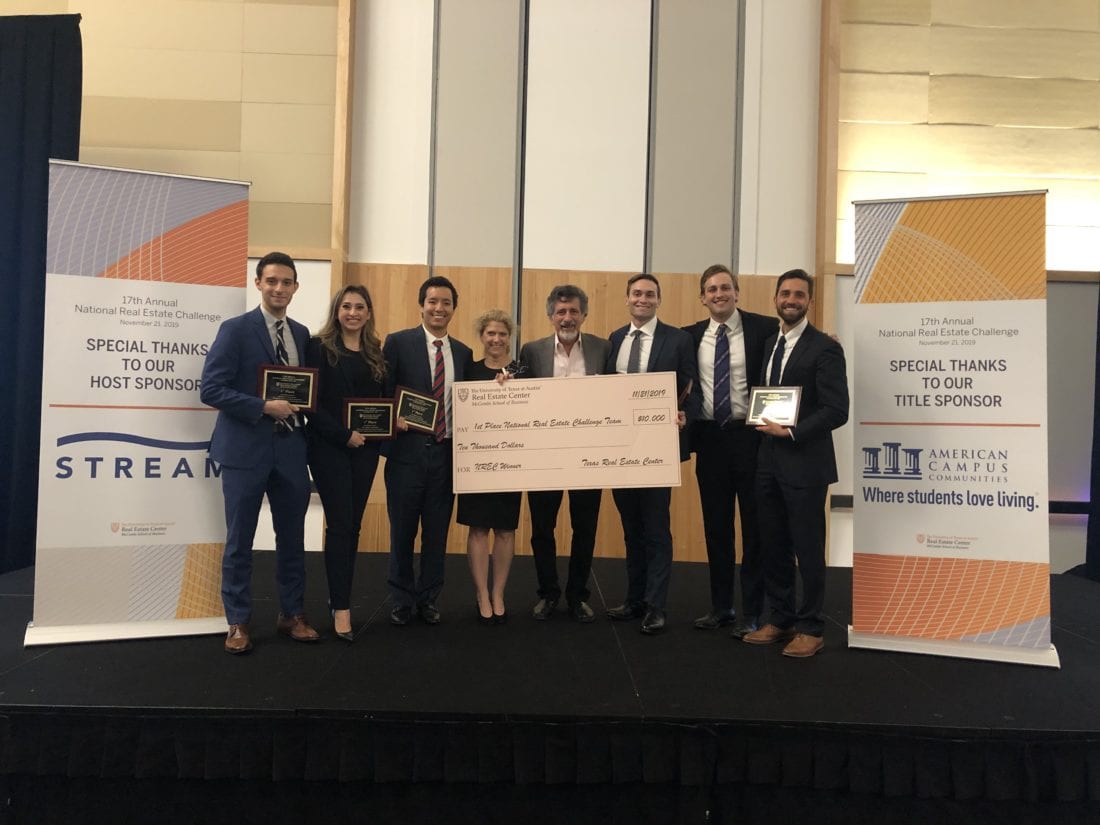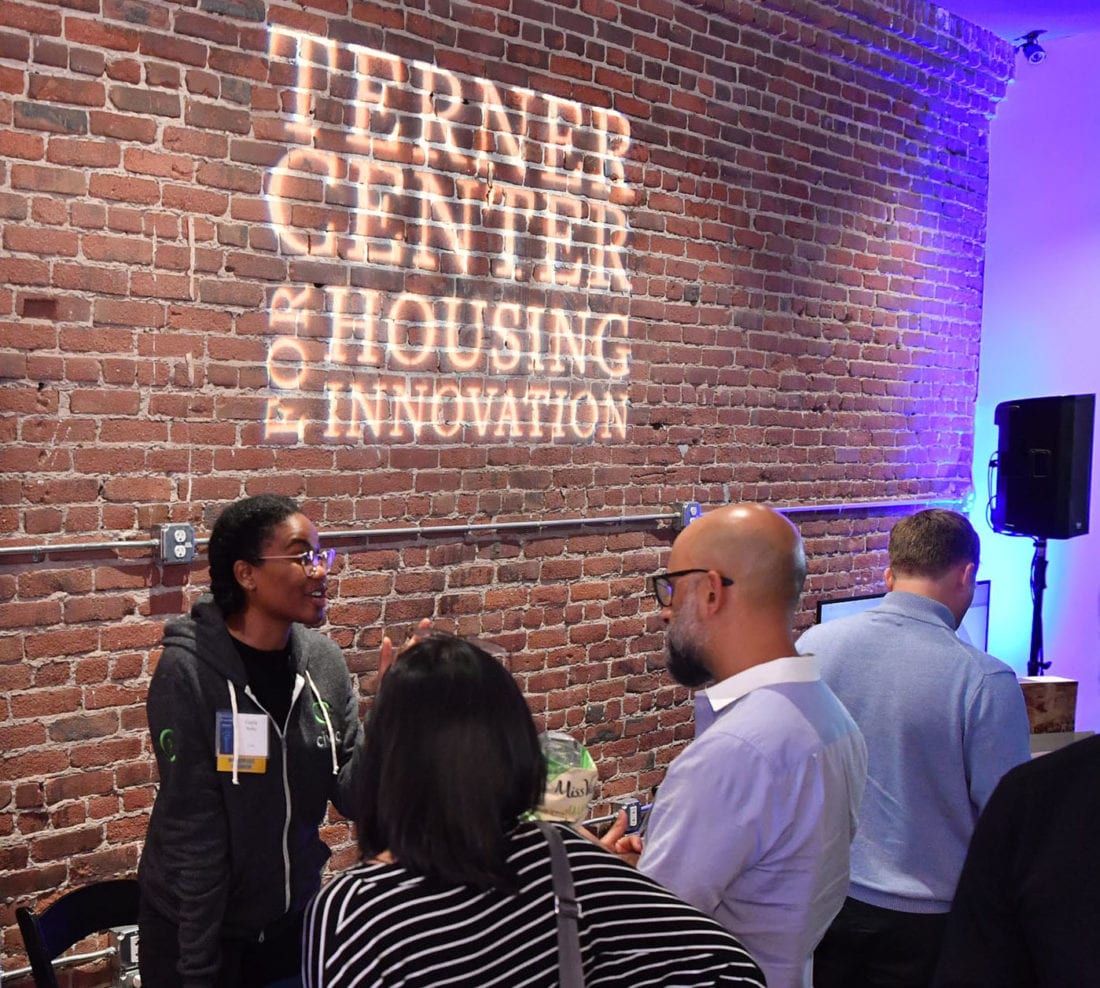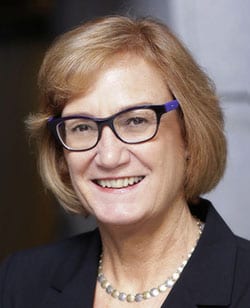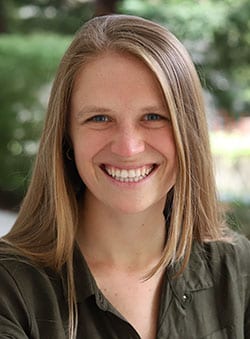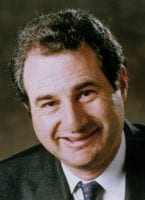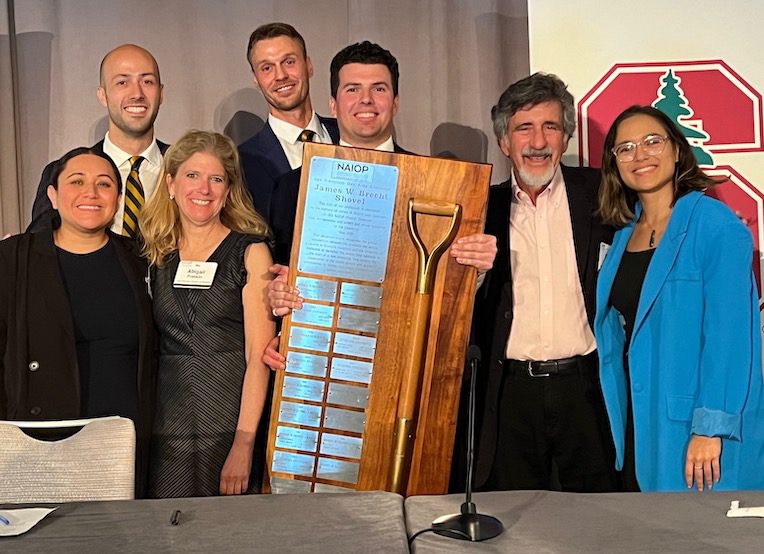
The Win: First place in the NAIOP San Francisco Bay Area (SFBA) Real Estate Challenge, held April 27. The friendly real estate development competition between UC Berkeley and Stanford celebrated its 34th year, with Cal taking home the coveted James W. Brecht Memorial Golden Shovel. The team’s $2,000 prize is donated to the nonprofit Challenge for Charity.
The Team: The Cal team included two Haas MBA students, Marshall Slipp, MBA 23, and Jack Woodruff, MBA 23; and three students in the UC Berkeley Master of Real Estate Development and Design program, including Esmeralda Jardines, MRED+D 23; Jordan Doane, MRED+D 23; and Serena Lousich, MRED+D 23.
The Challenge: Each year, organizers pick a development site that’s within driving distance of Berkeley and Stanford. Students don’t find out where the site is until the night before their first meeting. This year’s site was the San Francisco Wholesale Produce Market. “Typically the site that’s selected has challenges associated with it that make the development associated with it complicated,” says Marshall Slipp, MBA 23. “As a team, you have to work through those challenges.” The team had nine weeks to prepare a 100-page proposal explaining the vision, site design, development phases, and financials for the deal. In this case, the largest challenge was the limited equity available for the redevelopment project.
The Pitch: The UC Berkeley team pitched a plan to unlock as much equity as they could by obtaining permanent financing for some of the buildings that would remain on the site long-term. They also proposed a small capital campaign for the nonprofit owner and bringing in the expertise of a joint venture partner for redevelopment. “Bringing in a joint venture partner to help redevelop the site provides a lot of advantages in terms of raising capital, obtaining better financing terms, understanding the development process, and managing the redevelopment process,” Slipp said.
The Clincher: The UC Berkeley team proposed a multi-story industrial development that would upgrade the San Francisco Produce Market with cold storage facilities and a commercial kitchen hub for local food-based businesses. The design also featured fleet storage space for electrified autonomous vehicles, making the project financially feasible and readying the Produce Market for a new era of logistics and delivery.
The Haas Factor: The team credited Haas’ overall strength in real estate. Competition advisors Abigail Franklin and Bill Falik and the Fisher Center for Real Estate and Urban Economics faculty worked to validate and challenge the team’s assumptions. They also helped connect the team to developers, property managers, prospective tenants, and financiers. Leveraging these networks, the team conducted more than 60 interviews to hone their ideas and complete due diligence. In addition, this year’s team received coaching and moral support from last year’s winners, which helped the team stay inspired, refine the process, and benchmark progress.
